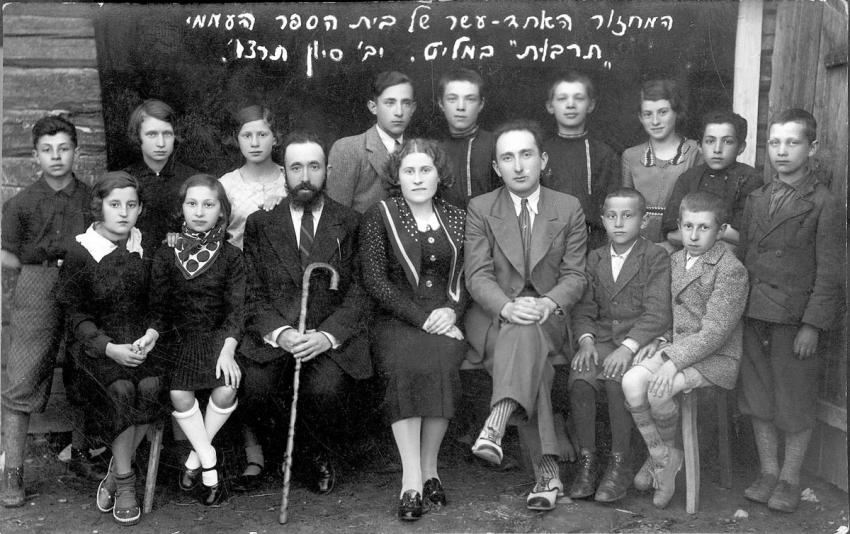On the eve of World War II, approximately 1300 Jews lived in Moletai, Lithuania, comprising 75% of the town’s population. Most of the Jews in the town worked in trade and various crafts.
A third of the town’s Jews were Zionists, another third were “Bundists” and workers, and the remaining third were ultra-Orthodox. Consequently, educational institutions from all of the different streams of Judaism were active in the town: a Talmud Torah, a Yiddish School of the “Cultural League” – and a Hebrew School of the “Tarbut” network, which opened in 1925. This photograph of the eleventh graduating class of the school along with their teachers was taken towards the end of the school year on 2 June 1936.
In 1940, when Lithuania was annexed by the Soviet Union, all the shops and factories in the city were nationalized, including those owned by Jews. All Zionist political activity was forbidden, and the Jewish schools were closed down.
In June 1941, the Germans occupied Moletai, and in late June and early July, dozens of Jews were murdered. The surviving Jews of Moletai were locked in the local Beit Midrash (Jewish study hall) in August. . After three days without food or drink, the Jews were evacuated and sent in the direction of Vilna. Approximately one kilometer outside the town, they were shot by the Germans and buried in a mass grave. According to the report of Karl Jaeger, commander of Einsatzkommando 3A, over 3,500 Jews from Moletai and neighboring Utena, almost 90% of them women and children, were murdered outside Moletai on 29 August 1941.
A mass grave was discovered after the war, containing the bodies of approximately 700 men, women and children. In the early 1990s a monument was erected at the site, with an inscription engraved in both Yiddish and Lithuanian: “In this place the murderous Nazis and local collaborators murdered on 29 August 1941, approximately 700 Jewish men, women and children.”







